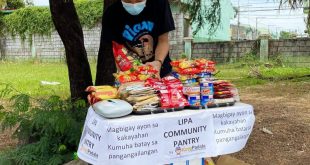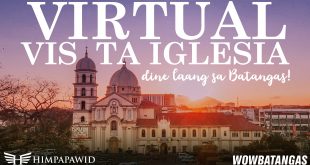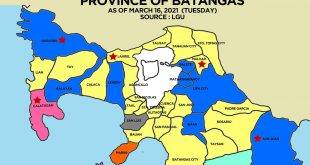Visit the Rosario, Batangas page for all information on Rosario.
- Rosario is a first class municipality in the province of Batangas.
- Founded on 1867.
- Belongs to 4th legislative district of Batangas.
- Dubbed as “The Rice Granary of Batangas”.
- According to available resources, the first settlement of the people of Rosario was along the coast of Lobo.
GEOGRAPHY
Total Land Area: 224.69 sq. km. (about 7% of the Total Land Area of Batangas Province, the 6th largest municipality)
Coordinates: 13°50′42″N 121°12′13″E
A national road connecting the two seaport cities passes through the town.
ADJACENT PLACES / BOUNDARIES
North – Municipality of Padre Garcia, Batangas and San Antonio, Quezon
Northwest – Lipa City, Batangas
West – Municipality of Ibaan, Batangas
East – Municipality of San Juan, Batangas
Southwest – Municipality of Taysan, Batangas
South – Municipality of Lobo, Batangas
DISTANCE TO MAJOR POINTS
Metro Manila: 93 kms.
Batangas City (Provincial Capital): 23 kms.
Lipa City: 12 kms.
Lucena City and Seaport: 62 kms. to the east
Padre Garcia: 4 kms. to the north
San Juan: 22 kms. to the east
Ibaan: 8 kms. to the west
Taysan and Lobo: 32 kms. to the south
LAND USE
Agricultural: 70% (rain fed paddy rice, upland rice, corn, other grain crops, sugar cane, coconuts, bananas, mangoes, citrus, and other fruit trees.)
Hilly Mountain Areas: covered with secondary forests, grasses and shrubs, trees (ipil-ipil, madre cacao, bamboos which are for fuel, animal feeds, as sources of building and other industrial materials.)
TOPOGRAPHY
In general, the land feature of the municipality is gently sloping. The low flat land areas are in the east, southeast part of the Poblacion. Around the plain areas, the land gradually slopes, undulating farther to the east southeast, becoming hilly and mountainous.
The slope ranges from 0-3 degrees to 15 degrees and above – higher in the mountain portion of the southeastern boundary of the Municipality.
SOIL TYPE
Generally best suited for cultivation.
- Guadalupe Clay – covers barangays east and southeast part of the Poblacion starting from Bagong Pook to the hilly barangay of the Municipality.
- Ibaan Silty Clay Loam – covers the western part of Rosario to Ibaan.
- Sibul Loam – covers the mountain portion of the southeastern boundary of the Municipality.
Clay Loam soil is fine textured which breaks into big lumps that harden as it dries. This type of soil does not easily crumble but tends to form into heavy compact mass. In general, this soil is best suited to plants like rice, corn, mango and other grain crops, root crops, bananas and fruit trees.
Dominant Features: Rolling terrains, Hilly and mountainous lands, well drained deep soil.
CLIMATE
Two pronounced seaasons: Rainy and Dry Season
- Rainy Season – starts late May or early June and lasts up to October (Heaviest Rainfall: August)
- Dry Season – begins in November and lasts until late May.
The generally invigorating climate of Lipa City is slightly felt in Rosario. Its most pleasant months are from November to February. During these dry months, the northeast monsoon winds (amihan) bring in breezes to cool the hot weather.
POPULATION
Total Population as of 2007 census: 95,785
Density: 420/km2 (1,100/sq mi)
Last Updated: November 5, 2013
 WOWBatangas.com Your Source of Great News and Stories from the Province of Batangas, Philippines
WOWBatangas.com Your Source of Great News and Stories from the Province of Batangas, Philippines



